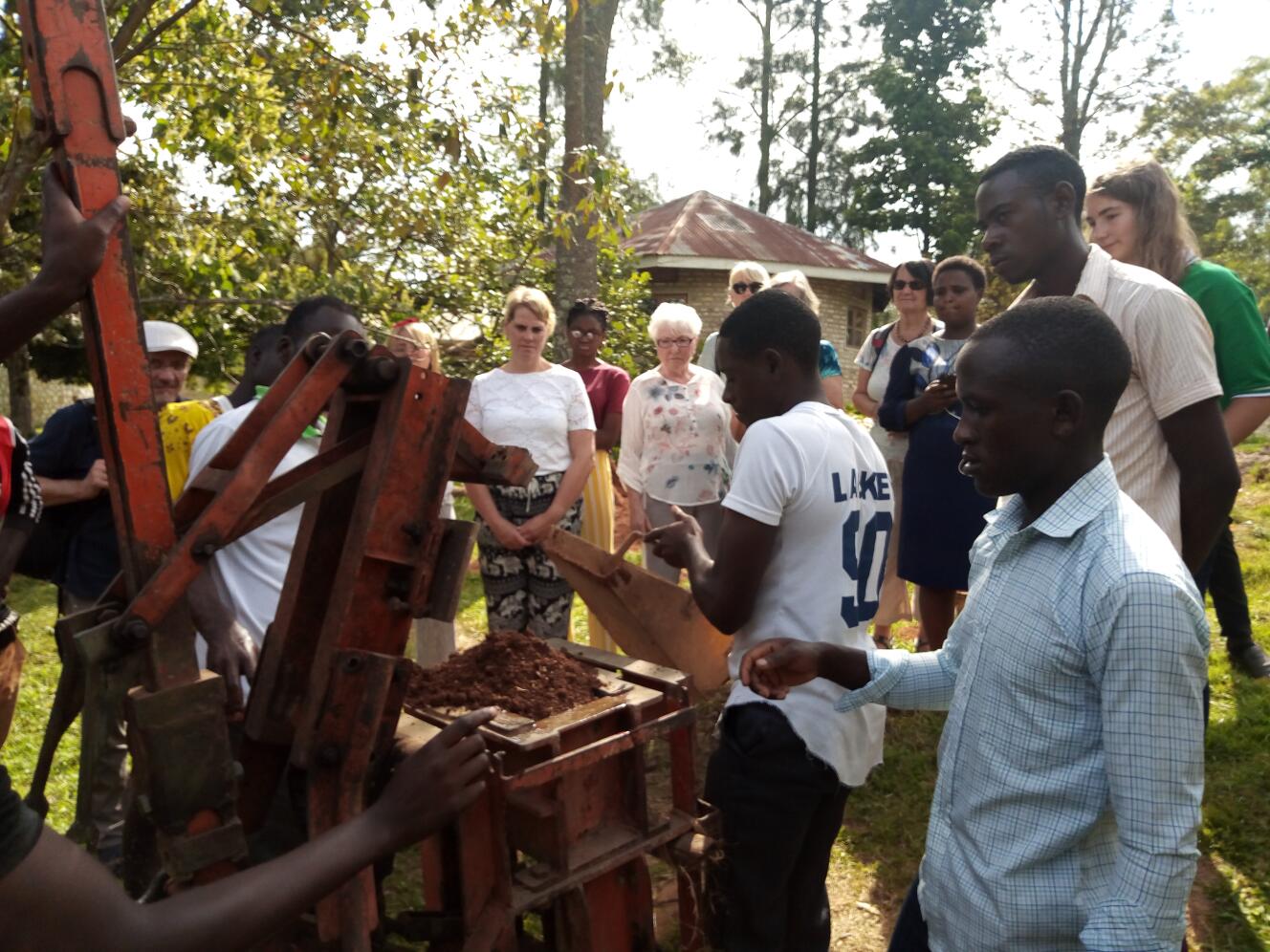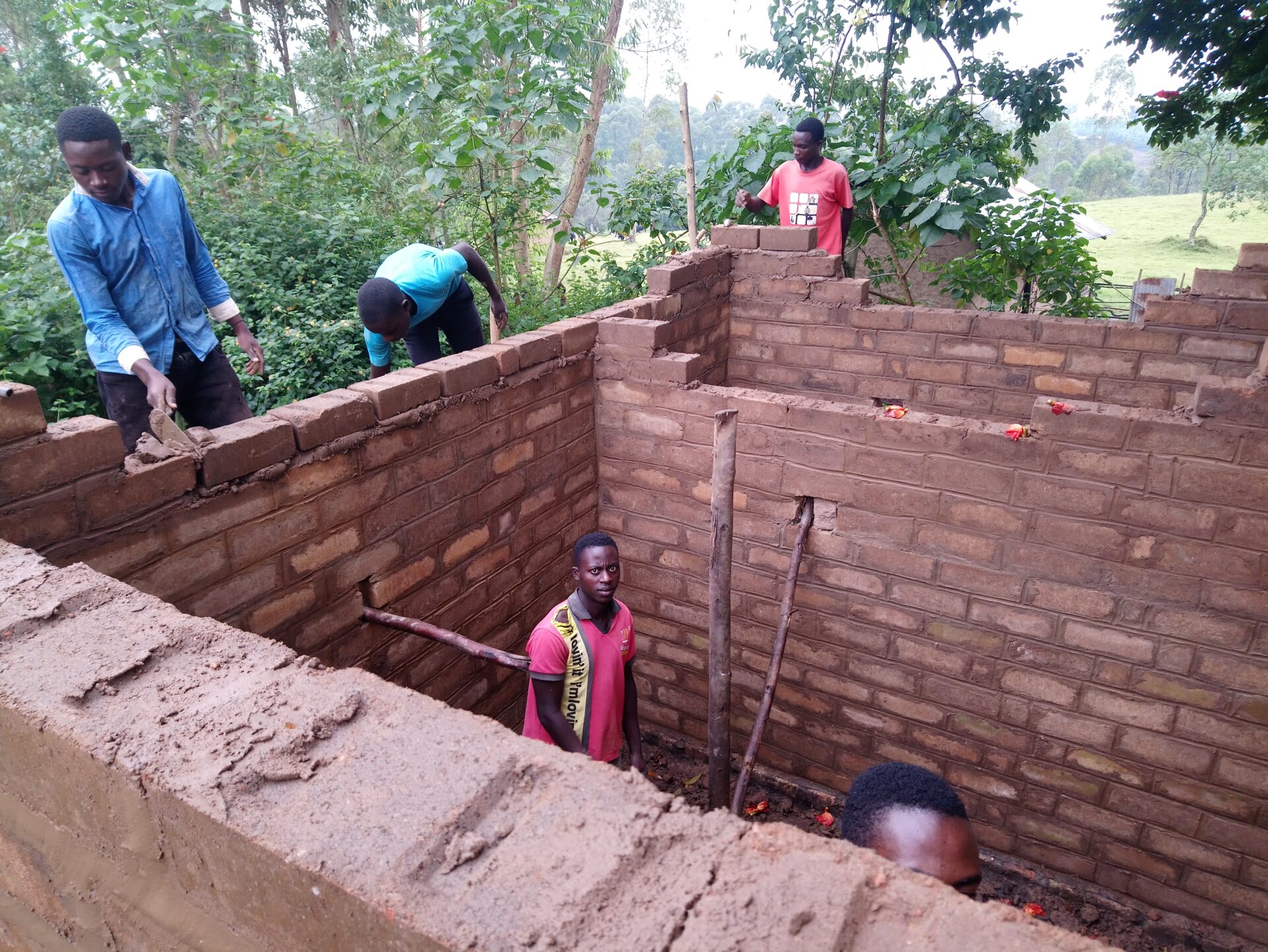Earth Brick Project

The largest part of Uganda’s population (between 60% and 70%) is living in so-called wattle and mud houses or other types of temporary houses (a timber frame structure filled with earth or buildings made of other not long-lasting materials) while for the construction of public buildings and housings of those who can afford it, fired bricks are used.
Both alternatives are related to several problems.
Wattle and mud houses have an average lifespan of only 25 years due to the rotting of the timber frame which is directly connected to the ground and have to be rebuilt periodically leading to high use of timber to maintain the current housing stock.
The preferred alternative of fired bricks also uses a lot of wood to fire the bricks and is one of the main factors of deforestation. Apart from that this technology involves high production costs to reach a certain quality standard, making it hard for most people to afford.
The problem is aggravated by the fact that a young man is normally required to build his own house when he wants to get a family.
Still, there are some alternatives to the above-mentioned building methods which are less known within Uganda which involve the use of adobe, improved wattle and daub or compressed earth bricks. These types of earthen architecture – if well mastered – achieve the construction of affordable, durable and aesthetic housing solutions while reducing the deforestation problem and using locally available materials.
Rukararwe Partnership Workshop for Rural Development is mainly dealing with compressed earth blocks (CEB) as an alternative to fired bricks and has so far constructed several classroom blocks and dormitories for schools and also some private buildings. Our organization has a skilled and experienced team for building and training, working at the promotion of the technology.
“Build your houses, Save costs, Protect your environment”
The construction of a high-quality wall with CEB is about 20% cheaper than a fired brick wall of equivalent quality and about the same cost as a fired brick wall of inferior quality while reducing the consumption of wood involved in building and therefore tackling Uganda’s deforestation problems.

The youth are constructing a kitchen, applying their acquired skills in earth brick technology,
for future RETEC-students to use during their stay at Rukararwe.
